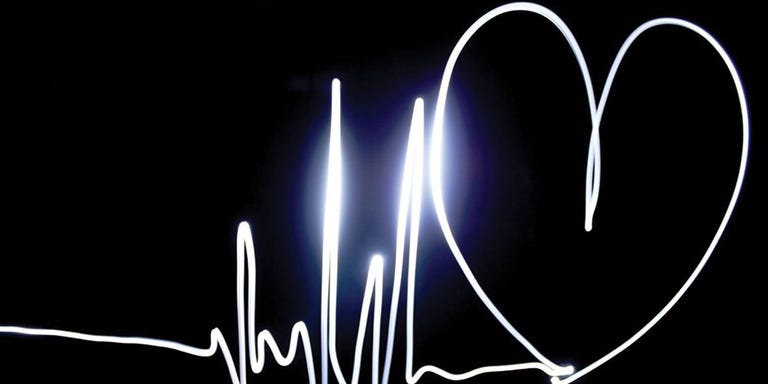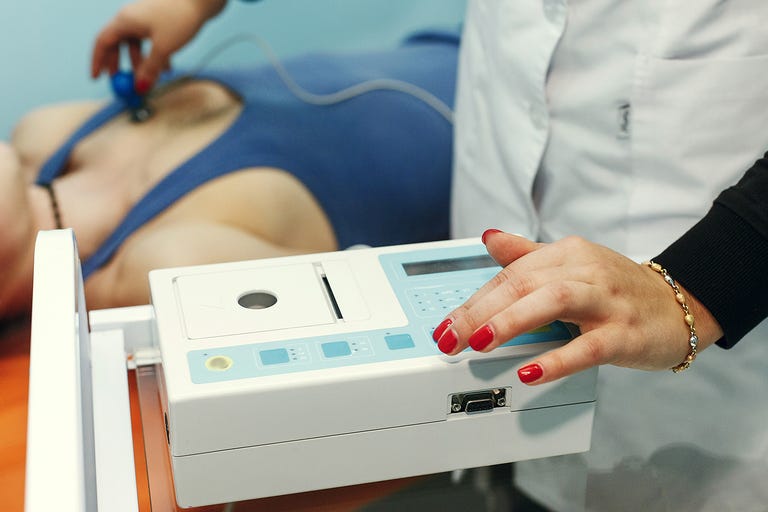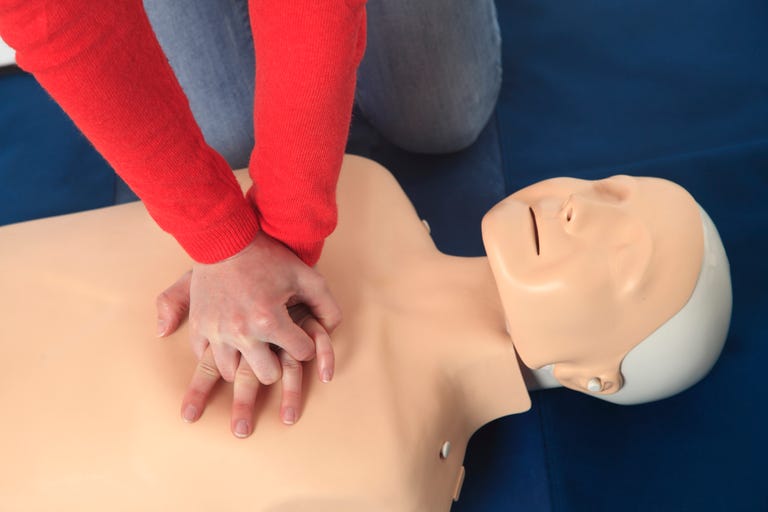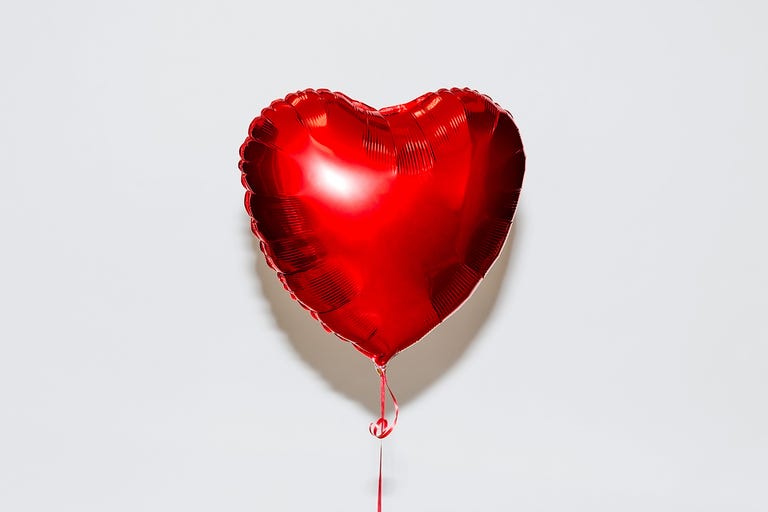
Sometimes ignorance is bliss (there are calories in wine?)—but not when it comes to heart disease.
Only about half of women recognize heart disease as the number-one killer of women, according to the Centers for Disease Control. One possible explanation: Many women still don’t know exactly what heart disease is or what it looks like.
When you think heart attack victim, you may picture an overweight, middle-aged man, gripping the left side of his chest, then falling to the floor.
While, yes, that can happen, women are more likely to suffer from back pain, jaw pain, or nausea before a heart attack, according to the American Heart Association.
It should also be noted that heart disease isn’t just heart attacks—it refers to anything that can go wrong in your heart, like getting blocked arteries, Suzanne Steinbaum, D.O., director of women’s heart health at the Heart and Vascular Institute at Lenox Hill Hospital in New York previously told Womenshealthmag.com.
The good news in all of this? Heart disease—and even heart attacks—are preventable 80 percent of the time, often just by lifestyle changes, according to the AHA. That means eating healthy, exercising regularly, and ditching cigarettes.
Another layer of protection is just knowing all you can about the disease in general. Here, eight things you probably don’t know about the number-one killer of women—but absolutely should.

Getty Images
An estimated one in four women dies from heart disease; breast cancer, on the other hand, is the cause of death for one in thirty women, according to the National Heart, Lung, and Blood Institute.
In fact, more women die from heart disease and stroke than all cancers combined, says Richard Snyder, M.D., board-certified family practice physician and chief medical officer at Independence Blue Cross in Philadelphia.
Heart disease also doesn’t discriminate—it’s the leading cause of death for both African American and white women; and the second leading cause of death, only behind cancer, for all other races, including Hispanic and Asian women.
Also, women of all ages and races aren’t talking to their doctors about their risk enough: Only 6 percent of women ages 25 to 34 admitted to doing so; that number only rose to 33 percent for women over the age of 65.

Getty Images
Underlying heart conditions, birth control pills, smoking, a poor diet, and a lack of exercise can all contribute to heart disease in women—and 90 percent of all women have at least one of those risk factors, according to the AHA.
Still, heart disease can strike in women who don’t have an risk factors too. A small study published by the Heart and Stroke Foundation in Canada found that 48 percent of participants—who were young with no known heart disease risk factors—already had signs of atherosclerosis (clogged arteries), which is often one of the first signs of cardiovascular disease.
However, the study also discovered an easy way to determine if you’re likely to have thickening blood vessels: measure your waist and hips. Participants with early signs of heart disease tended to have hip measurements that were smaller than, or almost the same as, their waist.

Getty Images
A recent national survey released by Orlando Health revealed that 60 percent of women thought heart screenings weren’t recommended until after age 30—but that’s not the case.
Experts actually recommend that screenings should begin at age 20. “Heart problems begin developing in our teens and early twenties,” says Maria Carolina Demori, M.D., cardiologist at Orlando Health Heart Institute. “If we don’t take action and start preventing the progression of that process, it’s only going to get worse.”
Those heart screenings can be included in regular checkups with your primary care physician, says Demori, and should include your doctor monitoring your blood pressure, cholesterol, weight, and glucose levels. The AHA also recommends undergoing an electrocardiogram (ECG or EKG) yearly if you have a family history of the disease or multiple risk factors.

Getty Images
Because heart disease symptoms vary greatly between men and women, they’re often misread.
In men, the classic heart attack symptom is left-sided chest pain or pressure, sometimes radiating down the arm or into the jaw, says Snyder.
Women, on the other hand, tend to have more subtle symptoms, like fatigue, nausea, shortness of breath, indigestion, back pain, even jaw pain. “If you’re experiencing any of these symptoms, it’s best to go straight to the local emergency room and prevent potential damage to your heart,” says Snyder.

Getty Images
Women are less likely than men to receive CPR in public during cardiac arrest, according to research presented at the 2017 American Heart Association’s Scientific Sessions.
The data showed that 45 percent of men received bystander CPR in public, compared to only 39 percent of women. What’s more: The odds of survival for men were 23 percent greater than women after being discharged from the hospital, per the AHA.
Researchers believe this is because “CPR involves pushing on the chest so that could make people less certain whether they can or should do CPR in public for women,” said Audrey Blewer, M.P.H, the study’s lead author in a press release.
“Ultimately this highlights a key knowledge gap in resuscitation science,” added Blewer, saying public knowledge of proper CPR tactics is crucial.

Getty Images
This kind of CPR is called “hands-only CPR”—no mouth-to-mouth resuscitation necessary. Here’s how to do it, per the AHA:
1. Check to see if the person is responsive. Someone who’s suffered cardiac arrest won’t be able to breathe or move, and they may turn blue.
2. Call 911.
3. Start hands-only compressions. Push hard and fast on the center of the chest at the rate of 120 compressions per minute (doing it to the beat of “Staying Alive” can help).
And yes, hands-only CPR is just as effective as the mouth-to-mouth variety.

Getty Images
“A common myth is that heart disease doesn’t affect women who are fit,” says Snyder. “But even if you’re very athletic, your risk for heart disease isn’t 100 percent eliminated.”
Sure, things like over-eating and a sedentary lifestyle increase your risk, but you can be thin and have high cholesterol—everything from your eating habits to being a social smoker can cancel out other healthy habits you have on lockdown.

Getty Images
Roughly 64 percent of women who die suddenly of coronary heart disease reported no previous symptoms, according to the CDC, and this is likely because of how easy it is to brush off certain signs as no biggie—you might blame your lightheadedness on standing up too fast, shortness of breath on skipping the gym, and fatigue on a crappy night’s sleep.
“Women need to pay attention to their heart, and notice if the activities they normally do are suddenly more difficult,” says Steinbaum. “If they are, consider getting your heart checked.” Exercise is sometimes the best way to monitor how you feel by assessing how much activity you can do, she says.

Getty Images
Managing your hormones is an uber-important move in keeping your heart healthy, says Arizona-based functional medicine specialist Westin Childs, D.O.
Estrogen is cardio protective, meaning it protects against heart disease—hence why a woman’s heart disease risk increases significantly post-menopause. “This drop in estrogen is managed genetically, so you can determine when your risk of heart disease increases based on when your mother went through menopause,” he says.
Additionally, out-of-whack thyroid hormones can cause an uptick in cholesterol, and in turn, lead to heart damage.
Everyday habits like eating healthy, exercising regularly, and scoring plenty of shuteye can go a long way in keeping your hormones balanced. You can also consult with your physician about having your hormone levels tested, then work together to set (and reach) heart-healthy goals, says Steinbaum.
Source: Read Full Article
